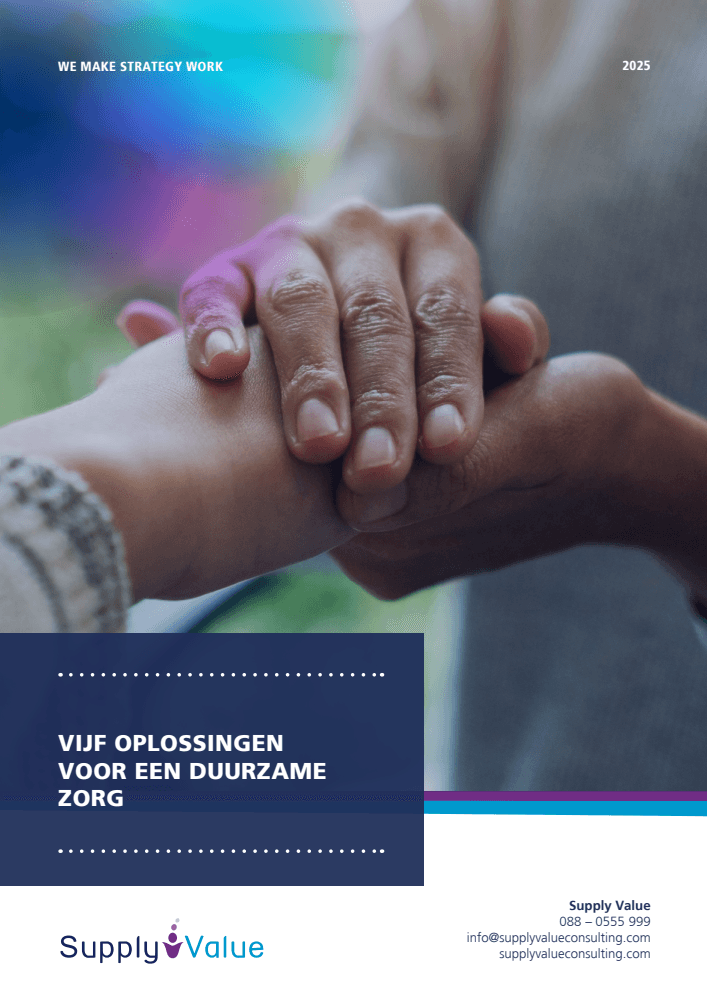In the coming years, will doctors be more concerned with prevention than cure? And will digital tools replace a visit to the doctor? Currently, many healthcare processes are set up in such a way that they are initiated by a patient with complaints. This patient comes to a (general) physician, and is diagnosed and treated or referred, after which the medical mills start turning. But will these processes remain the same in the years to come?
We, Supply Value, have researched the priorities within healthcare. In our previous insight, we briefly took you through the first two developments from our report: from islands to networks and from hospital to home. In this second sneak peek, we share with you the next two developments: from reactive to proactive and from face-to-face to digital first.
From reactive to proactive
When do people go to the doctor or the hospital? Until now, this happens when people begin to experience health complaints. A visit to a health care provider is therefore essentially about examining the complaints and finding out how they can be remedied. However, this will begin to change. The moment when people contact a physician is going to shift, but the contact itself is also going to look different.
In the future, more resources will be deployed at the beginning of the health chain rather than at the end. This will shift the focus from treatment and aftercare to lifestyle and disease prevention. Instead of waiting for care recipients to show up with problems or complaints, technological advances and data will enable caregivers to recognize a problem before it reveals itself in symptoms or becomes acute.
In order to best discuss a care recipient’s lifestyle with a healthcare provider, up-to-date, reliable and the right amount of data will need to be obtained from the care recipient. Thanks to technological advancements, data exchange about the person in need of care is made possible as smartphones and wearables collect and combine data from the person in need of care. The data obtained helps caregivers learn about an individual’s behavior, habits, cravings and triggers, providing the right feedback at the right time.

From face-to-face to digital first
Before the crisis, care for those in need of care consisted largely of logistics: calling (with complaints), making an appointment, traveling to the hospital or doctor’s office and waiting in the waiting room. The only alternatives to this were home visits by family doctor and home care. The curtailment of visits to family doctor and hospital by measures resulting from the COVID-19 outbreak has spurred new ways of communication between those in need of care and caregivers. For those in need of care, this means, for example, a new way of making appointments: it is no longer natural to go to the hospital or family doctor’s office for an appointment, having an online appointment is becoming more common. In this way, a person in need of care gains more control and flexibility in the provision of care themselves.
An online intake or screening has two benefits:
- A more efficient approach for both the person in need of care and the health care provider. When a diagnosis can be ordered remotely and complaints can be treated by the person in need of care himself or herself at home, the person in need of care does not have to travel to the care provider unnecessarily. At the same time, this way of working allows the caregiver more time for people who really need on-site care.
- Technological applications allow remote (digital) monitoring of important health values of those in need of care. This way, the person in need of care does not have to come by for every periodic check-up, but can intervene if necessary.
The insight is available for download below.


